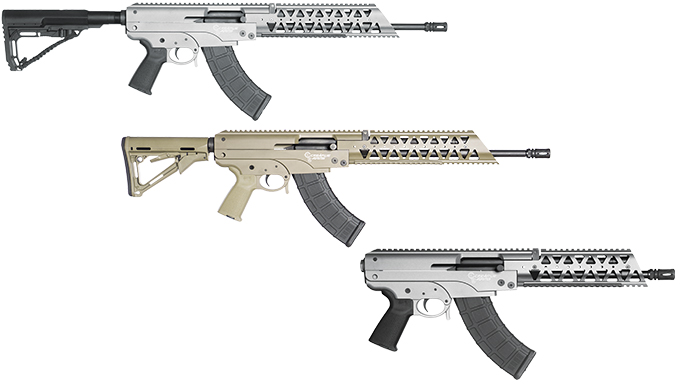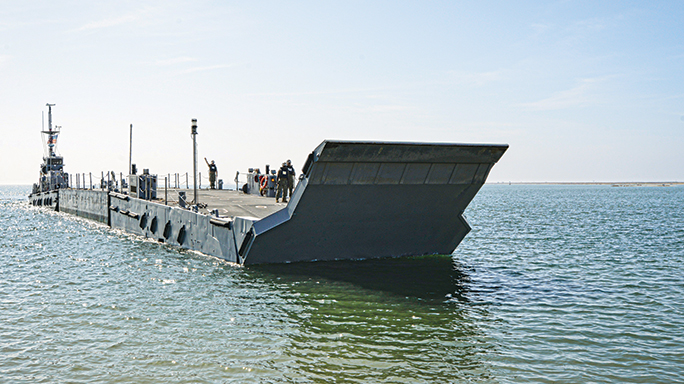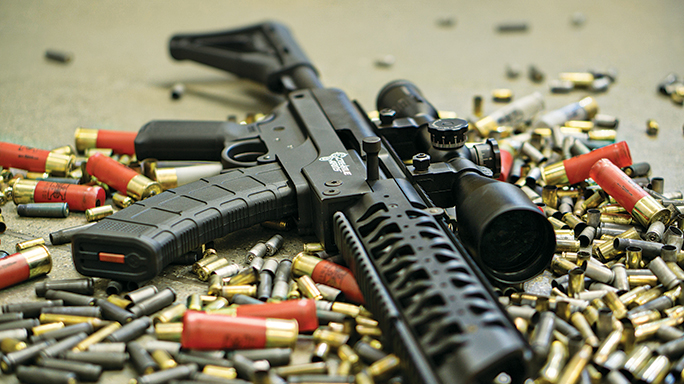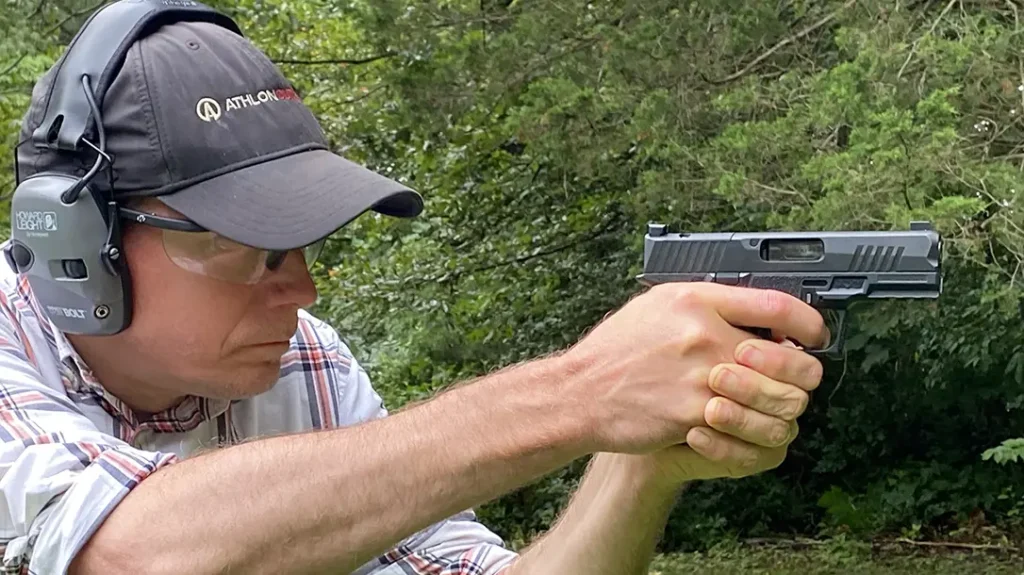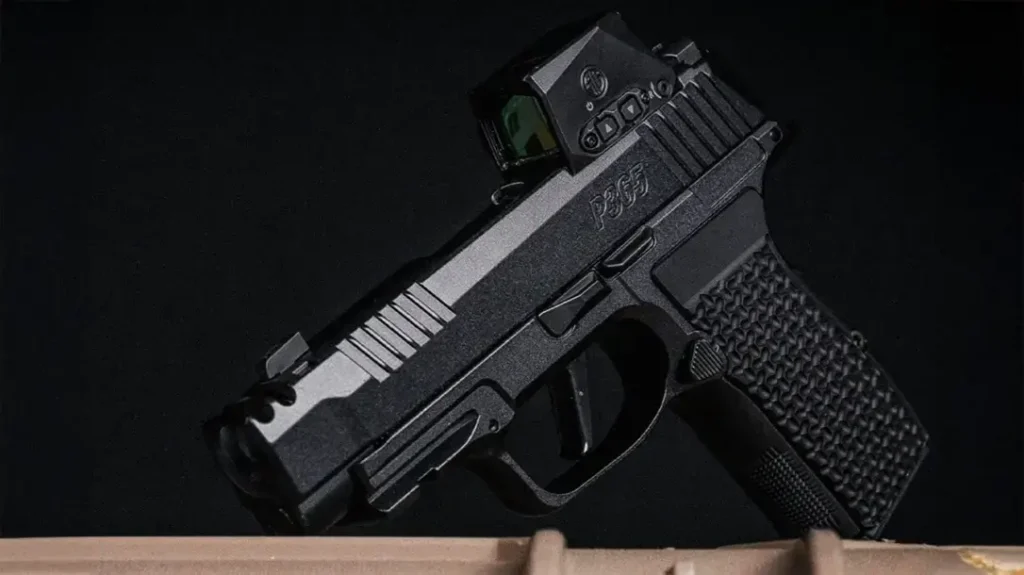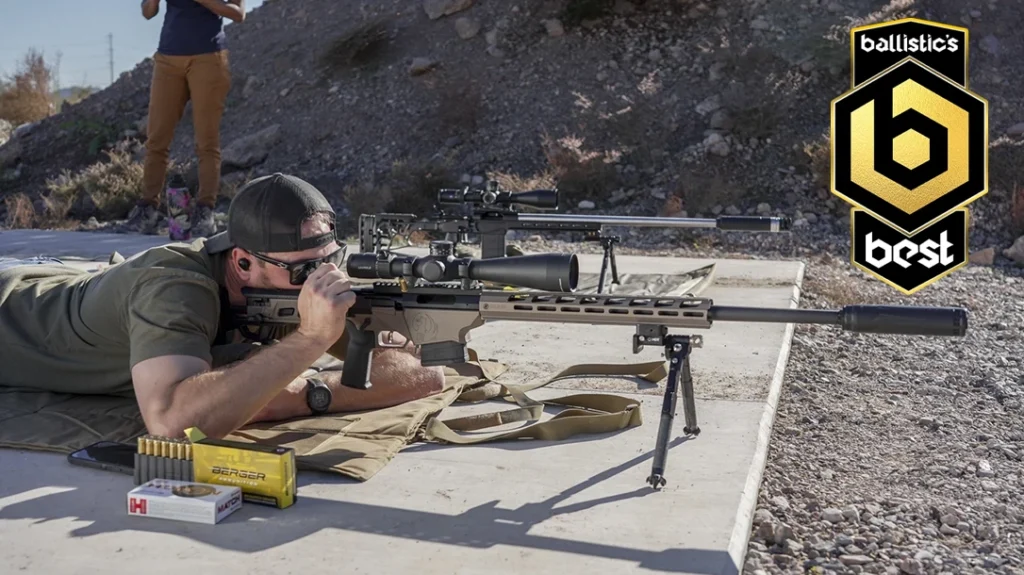Situations both good and bad have plenty to teach us all, yet many don’t realize that it’s not so much the experiences themselves that mold us but more specifically how we choose to react to them. For some, negative situations become excuses for failure, and for others they become a driving force for change. On the flip side, positive situations can also create complacency for some while creating a fear of losing them for others.
- RELATED STORY: Magpul M-LOK Q&A with 5 Tactical M-LOK Configurations
This is what makes each and every one of us unique, but ultimately, how we choose to deal with these situations defines who we become. In essence, life is about the journey and not the destination, but along that journey, should you decide to couple ambition with resilience, focus and heart, anything is possible. This is exactly the path of Bob Folkestad, a former U.S. Navy Seabee turned entrepreneur and president and co-owner of Creative Arms.
The road hasn’t been easy. Ask the former Seabee if things were always this smooth, and he’ll be the first to admit that it certainly wasn’t the case. He didn’t grow up rich, he served in the Navy to help pay for college and he spent many sleepless nights wondering if he should go and get a day job. While the commitment carried a fair amount of struggle, Folkestad is quick to point out that its impact on his business sense was invaluable, and that he has absolutely no regrets about his time in the service.
Advertisement — Continue Reading Below
We had a chance to catch up with Folkestad, and as is the case with many of our interview subjects, the written word struggles to capture the true essence of their persona. Speaking with him is like catching up with an old friend. There’s a certain aura of comfort and trust when you talk with him. He’s well-spoken and straight to the point, and his outlook on some facets of his life is downright entertaining and memorable.
- RELATED STORY: 3 Everyday Carry Setups with Rachel Vandevoort
At the beginning of our interview, he started with, “I just want to be clear that I was a Seabee, not a Navy SEAL. I was not a war hero, I did not save our country, but I proudly served our country to the best of my ability, and I’m proud of it.”
Those words resonated with us throughout the interview, and his whole dialogue was absent of the machismo that can stereotype the industry. Instead, his approach was filled with passion, character and true enthusiasm.
Advertisement — Continue Reading Below
Q&A
You’re finishing your MBA degree from William Penn University and graduated from the E200 SBA MBA Boot Camp, but did your experience as a Seabee teach you anything that school didn’t?
It sure did. It gave me the ability to overcome fear, but more importantly, it taught me about leadership. My time as a Seabee was an above-average experience and a complete honor. It also taught me about drive and the willpower to stick with the mission at hand.
Advertisement — Continue Reading Below
Being a member of ACB2 taught me many things. When I joined the Navy, I had no idea that I was going to be a Seabee, or that our unit would be led by someone like Lt. Michael Thornton, Navy Seal and Congressional Medal of Honor recipient. My parents were not rich; I joined to help pay for college. It just so happened we had Desert Storm and Desert Shield happen at the same time. I enlisted in the Navy when I was 17 years old in 1989. At 17, you don’t know crap. You think you do, but really you don’t know much about what life really is. The Navy and my experience helped define who I am. Having met and worked for someone like Lt. Thornton was a life-changing event in and of itself. For sure the training, attention to detail and work ethic learned from my time in ACB2, along with the team mentality we had, has made me driven to be successful and to push through things that most people would give up on.
Was there any specific experience or incidents during your time in the service that changed your perspective on life?
Yes. We lost a member in an accident. It was very life-changing, and it was not something that I enjoy discussing. The bottom line is the military does lots of dangerous things, and you need to really pay attention to all details at all times. Many rules and regulations in the military are written in blood, so it is important to follow the rules and keep your head out of your butt.
Advertisement — Continue Reading Below
When was your first experience in the firearms world?
I grew up an avid shooter. I started shooting at a really young age; I might have been four or five years old. I was shooting bows and arrows, .22s, BB guns, pellet guns, you name it. To be honest, I was lucky, because nowadays, letting a child that young partake in those activities would probably land you in jail for child endangerment [laughing].
What exactly is Creative Arms?
Advertisement — Continue Reading Below
We are an advanced designer and manufacturer of high-quality weapons and accessories for commercial, civilian and competitive shooting.
How did you end up entering the gun market?
Our entry into the firearms market was by accident. We started doing consulting work for Brownells, we built machine guns for Controlled Chaos Arms and it came to a point where I decided we needed an FFL license. A few years passed, and we still continue to work with them, but also decided to create our own line.
Advertisement — Continue Reading Below
Do you remember how and when your first guns were produced?
My guys wanted to build AR-15s really bad. That market is saturated and spun every direction possible, so when I heard that they wanted to take a stab at it, I let them do it on their own. The first gun I saw them prototype functioned fine, but I didn’t like the appearance of it.
To be honest, I really didn’t like the way it looked. Look, the bottom line is a machinist can do everything an engineer can do; the only difference is that a machinist dropped out of school and bought a new Camaro [laughing].
Advertisement — Continue Reading Below
So what was your initial reaction to seeing the prototype? And what changes did you implement?
When I first saw the receiver, I gave it the nickname the “IROC Z AR-15.” It was ugly as hell! You have to remember that a 300-pound guy who wore pink tennis shoes designed it! I wanted to make it more industrial and combine the best of both worlds from the AR-15 and AK-47 rifles. Through my military experience, I liked the AK-47. It was my favorite because it had more oomph and the ammo is cheap, but what sucked was the accuracy. Most AK triggers are good, but the sight radius is too short for American shooters. So I figured why not build an AK, put in the fire control group of an AR and give it better accuracy by extending the sight radius. That’s what led to the design of the ARK, for which we currently have three design patents. In addition, we are waiting on a utility patent on it as well. I also wanted the upper to have more mass so it has room for engraving or customization.
Please offer us a breakdown of your current business.
Advertisement — Continue Reading Below
I was the director of electronics and innovations at SPAL from 1995 to 2008. SPAL made some changes in regards to engineering staff. I acquired part of SPAL’s electronics business and started Creative Werks. We started in a very humble shop, but since then we have grown to about 20,000 square feet.
Creative Arms was started four years ago. We were doing some design work for Brownells, and I was tired of the AR-15 that had been built in every flavor imaginable. Since the AK is a little underrated by most, I set out to build my own variant, using the basic design of the trunnion and bolt from an AK and integrating the trigger from the AR. It took a few years and some significant investment, but now we have a rifle, pistol, SBR, suppressor and other accessories that are well made, accurate, extremely durable and made in the U.S.A. Creative Arms is owned by myself and Cris Folkestad.
What made you transition from engineer to business owner?
When the company I worked for sold, they downsized the engineering staff to cut costs. In addition, there were personality conflicts with new management. And after the death of my mentor, it made me realize a few things. For starters, it made me realize that I needed to be in control of the future for myself as well as my team, and the lack of U.S.A.-made products encouraged the decision.
Editor’s Note: Bob Folkestad is also an avid pilot and musician, and he enjoys collecting wine, musical instruments and vintage firearms. In his down time you can find him at his home in Des Moines, Iowa, the shooting range or Napa Valley, Calif.

